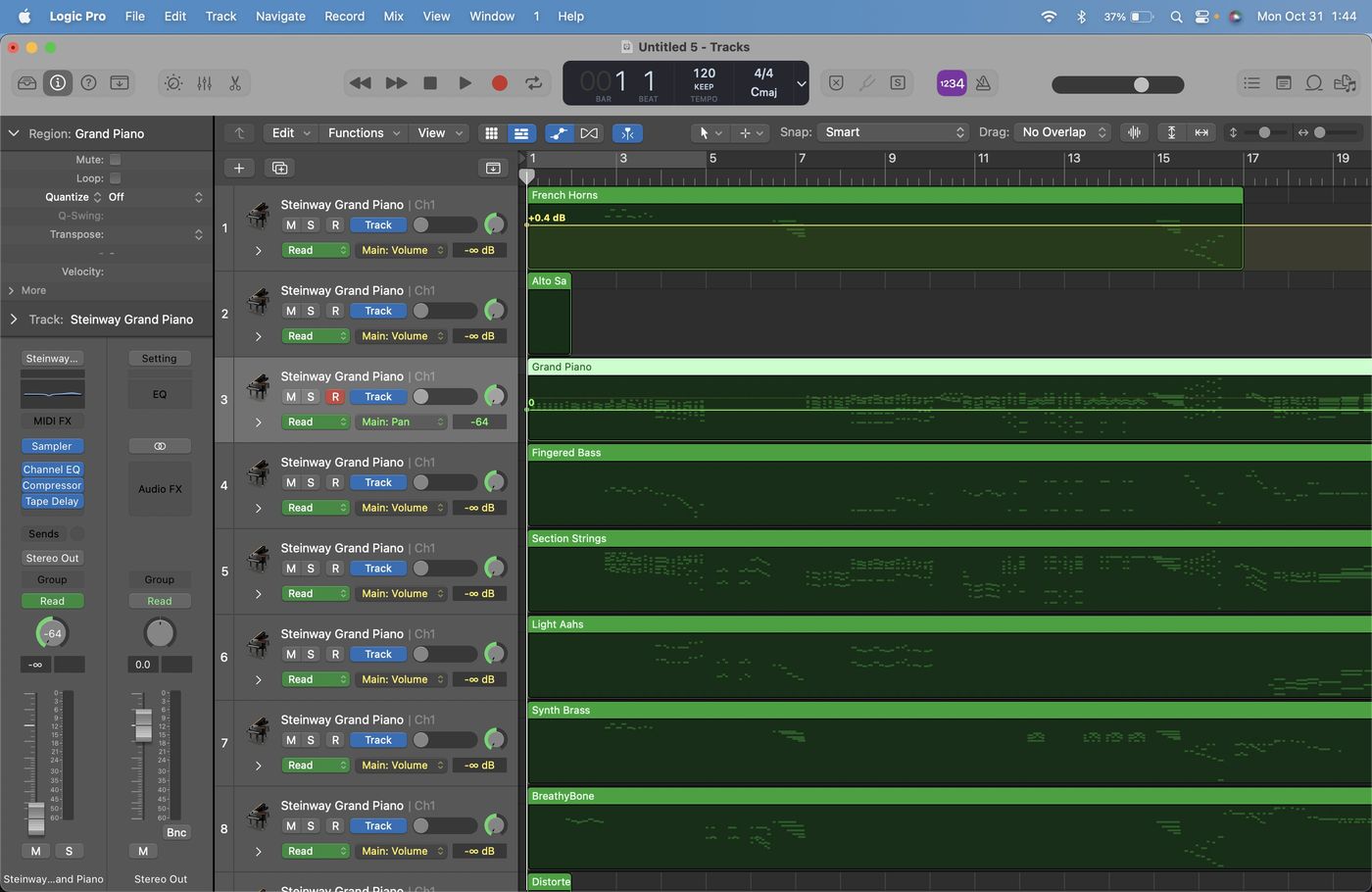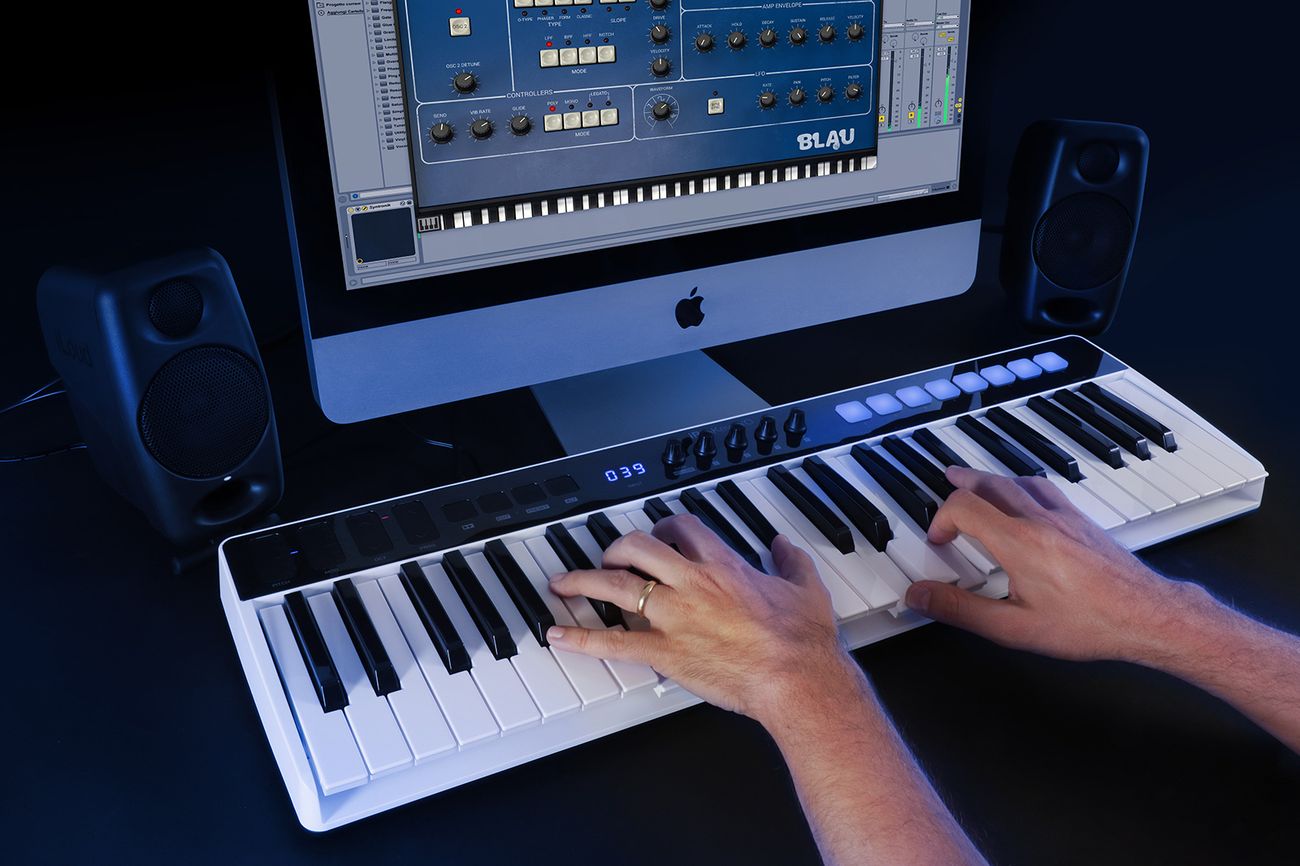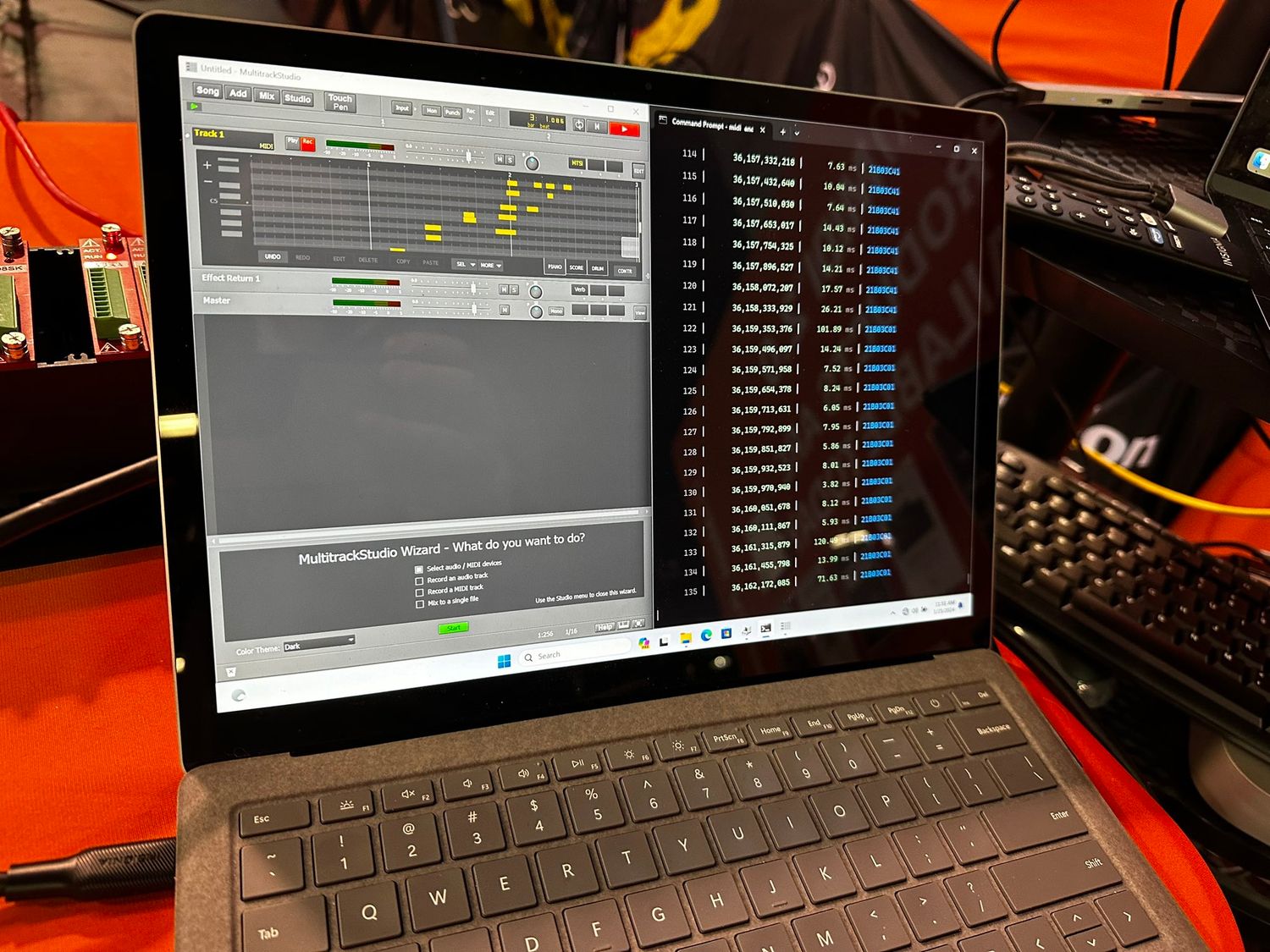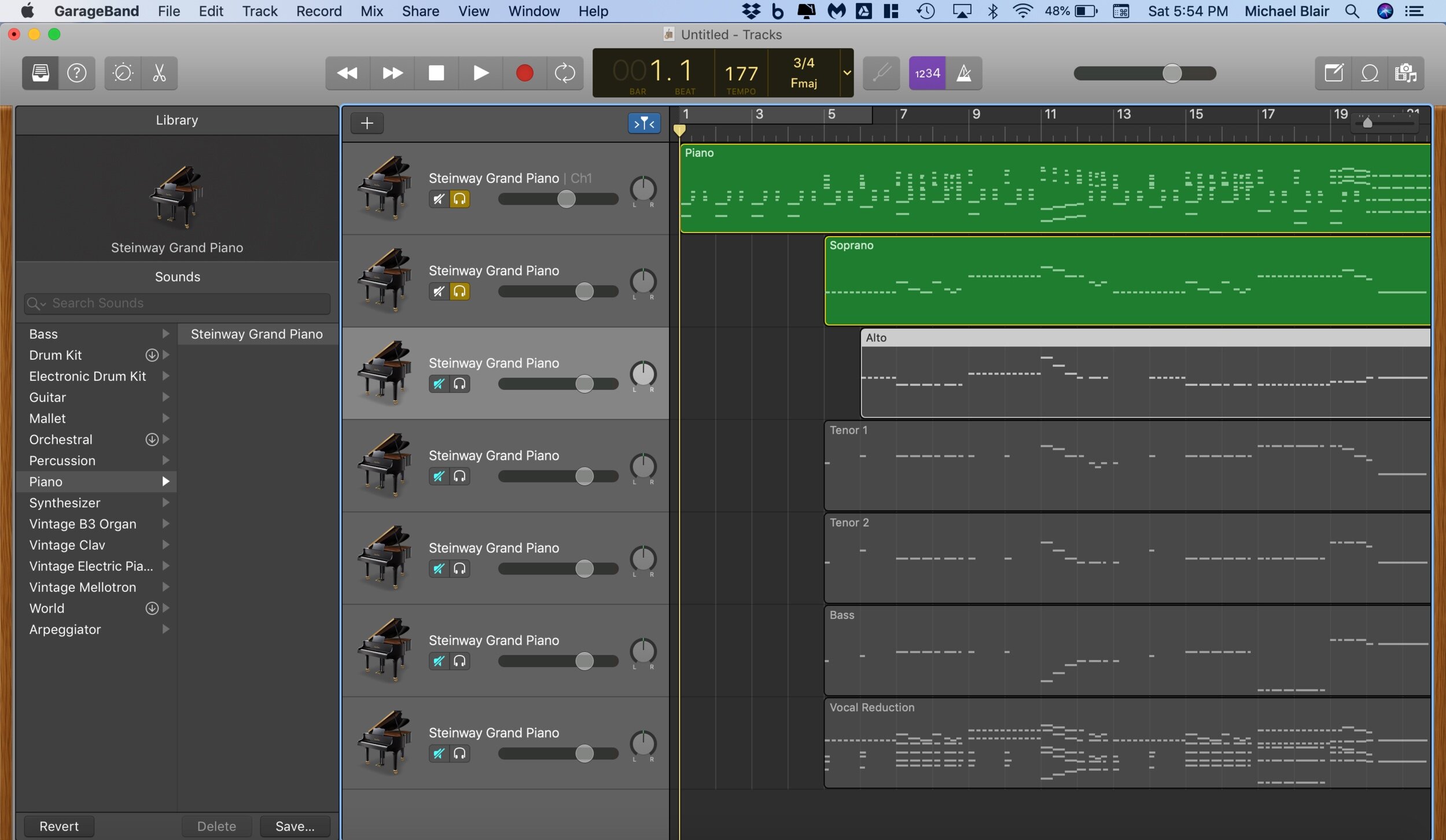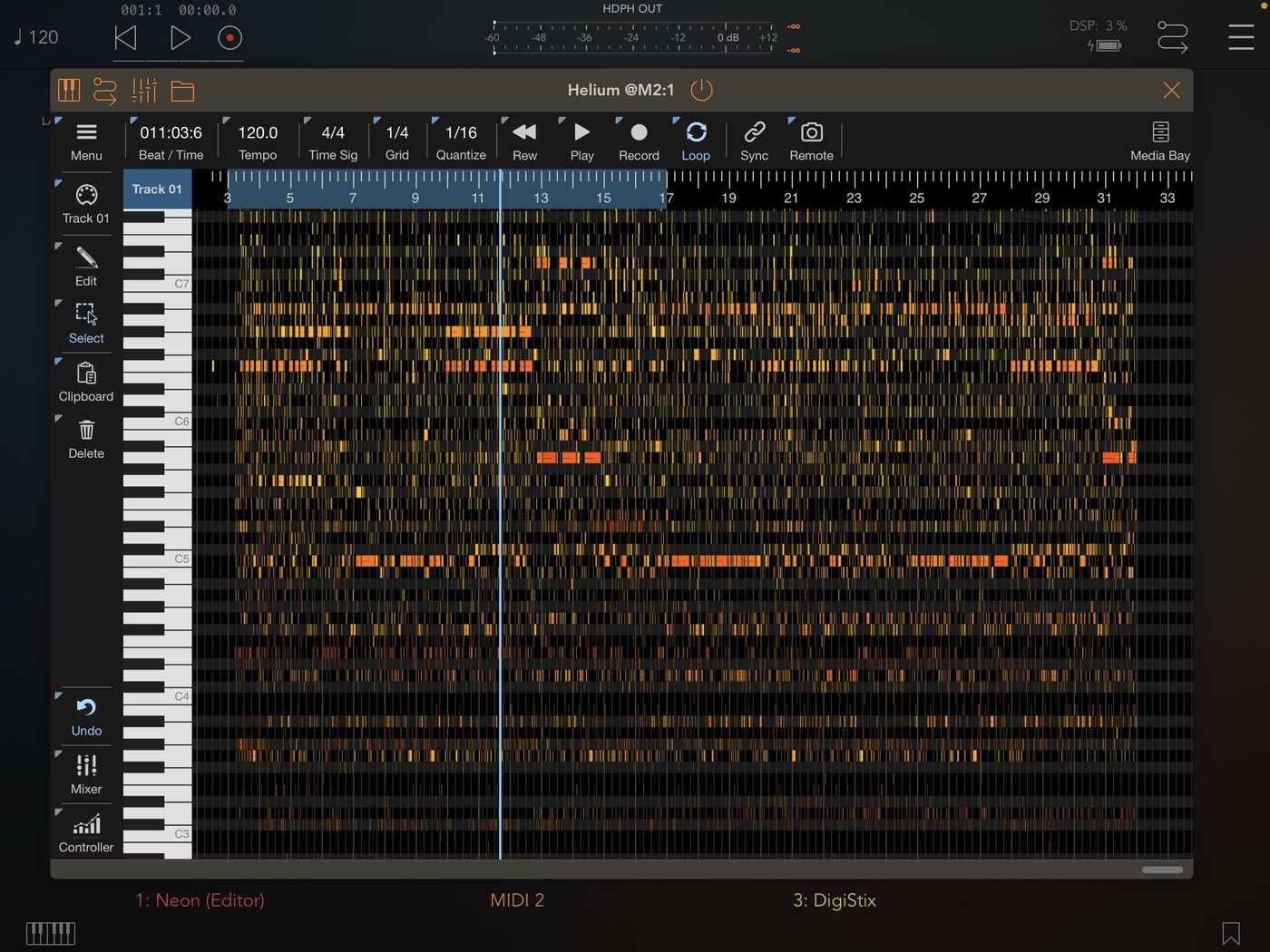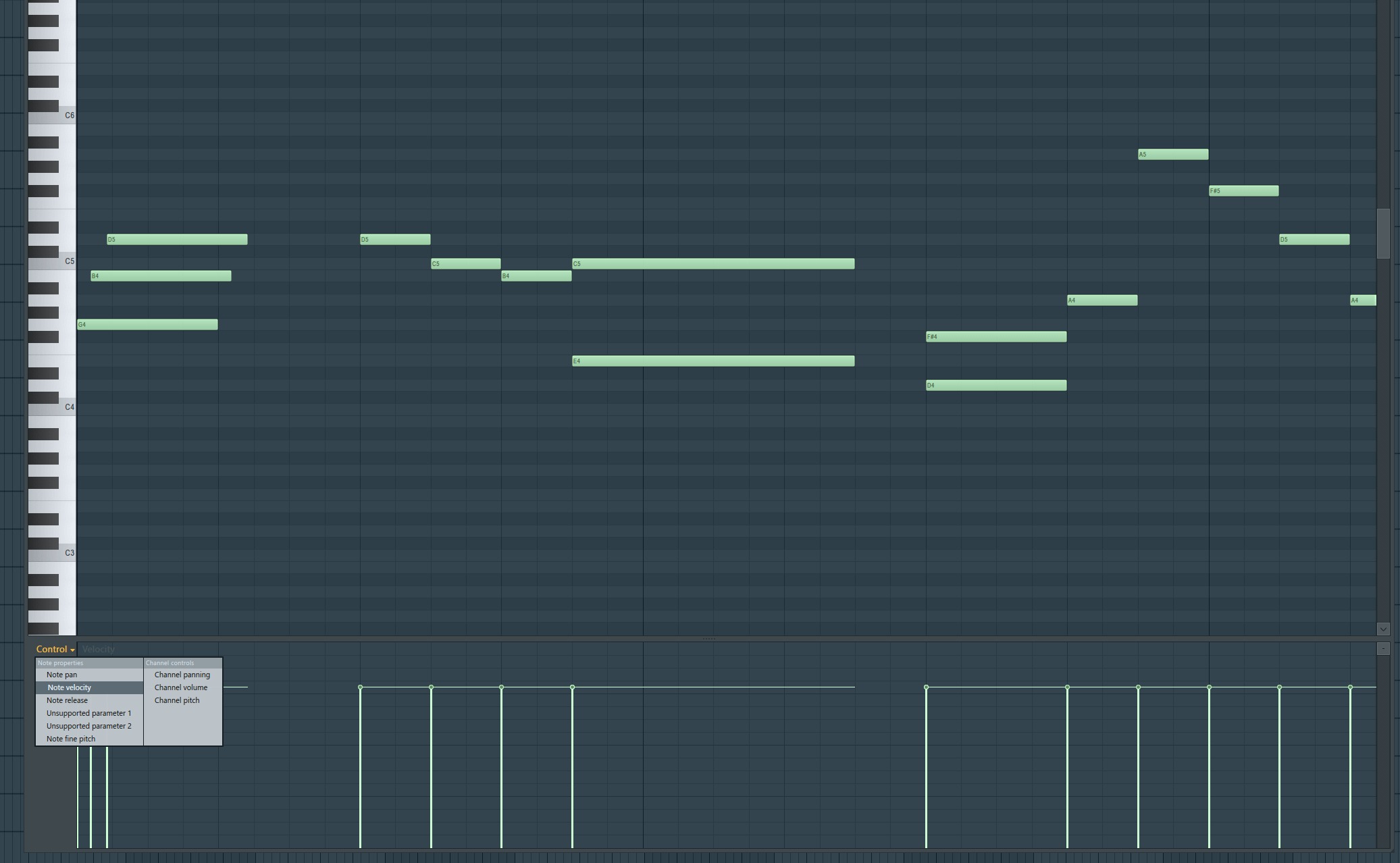Home>Production & Technology>MIDI>How To Open A MIDI File
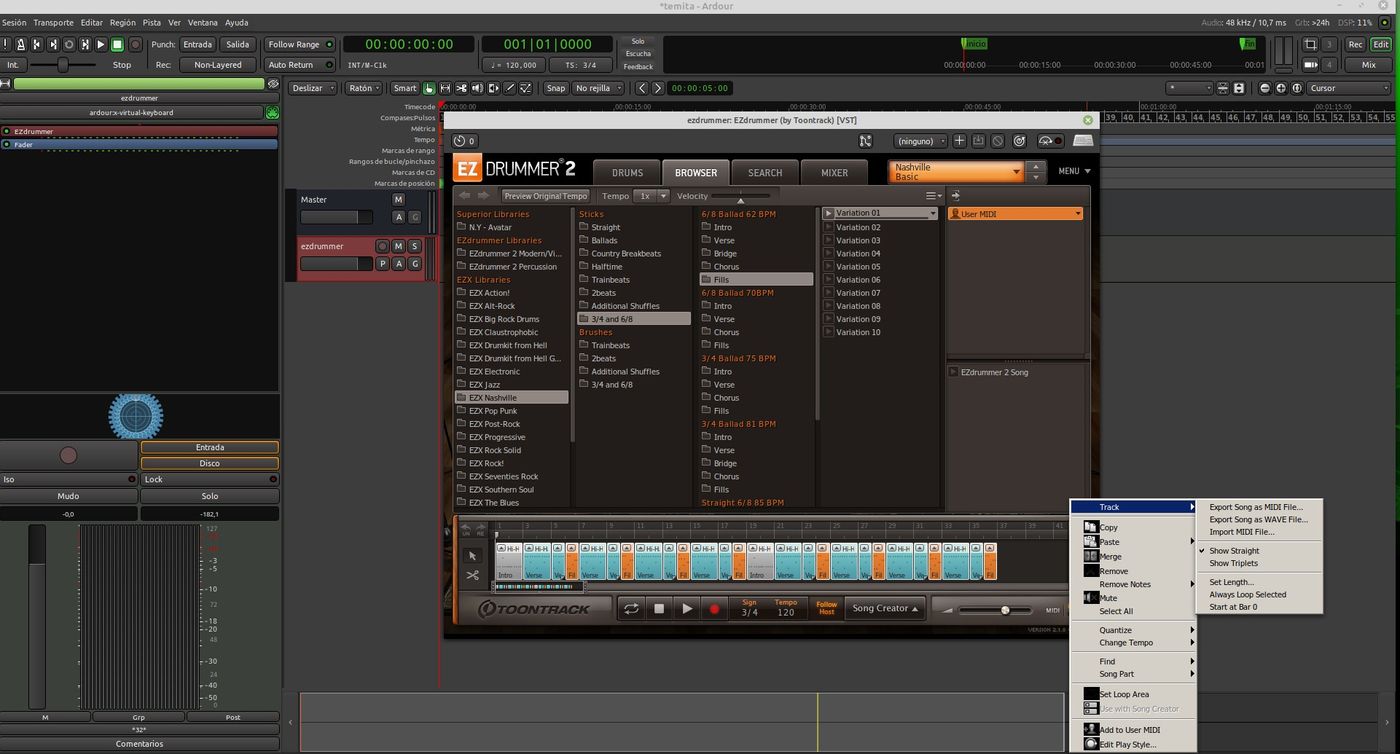

MIDI
How To Open A MIDI File
Modified: February 22, 2024
Learn how to open a MIDI file and play music on your device. Discover the best software and apps for managing MIDI files.
(Many of the links in this article redirect to a specific reviewed product. Your purchase of these products through affiliate links helps to generate commission for AudioLover.com, at no extra cost. Learn more)
Table of Contents
Introduction
MIDI files have been a cornerstone of music production and composition for decades. These versatile files contain musical data that can be played back on a wide range of electronic instruments and software. Whether you're a musician, producer, or simply a music enthusiast, understanding how to open and work with MIDI files can greatly expand your creative horizons.
In the world of digital music, MIDI (Musical Instrument Digital Interface) files serve as a universal language, allowing different devices and software to communicate and interpret musical information. Unlike audio files, which capture sound recordings, MIDI files store instructions for playing music, such as note pitches, durations, and velocity. This unique characteristic makes MIDI files incredibly lightweight and versatile, as they can be easily edited and manipulated without degrading audio quality.
Opening a MIDI file is the first step to unlocking its musical contents. Whether you're looking to learn a new song, remix a classic track, or analyze the musical composition of a piece, having the ability to open and interact with MIDI files is a valuable skill for any music enthusiast. Additionally, for musicians and producers, accessing and editing MIDI files opens up a world of creative possibilities, allowing for intricate arrangements, customized instrumentations, and seamless integration with digital audio workstations (DAWs).
In this article, we'll delve into the intricacies of MIDI files, explore the software options available for opening and working with MIDI files, and provide a step-by-step guide to help you open MIDI files with ease. Whether you're a seasoned music professional or a curious beginner, by the end of this article, you'll have the knowledge and tools to confidently navigate the world of MIDI files and harness their potential for musical expression and creativity.
Understanding MIDI Files
MIDI, which stands for Musical Instrument Digital Interface, is a technical standard that describes a protocol, digital interface, and connectors that allow a wide variety of electronic musical instruments, computers, and other related devices to connect and communicate with one another. MIDI files, often recognized by the .mid file extension, are a unique type of digital music file that differ significantly from traditional audio formats such as MP3 or WAV.
At its core, a MIDI file does not contain actual audio data, such as recorded sound waves. Instead, it stores a series of instructions and messages that describe musical events, such as note on/off, pitch, velocity, and control changes. These instructions are used to trigger sounds in MIDI-compatible devices, such as synthesizers, samplers, and digital audio workstations (DAWs).
One of the most notable features of MIDI files is their lightweight nature. Unlike audio files, which can be large in size due to the recording of actual sound, MIDI files are compact and efficient, as they primarily consist of text-based information. This characteristic makes MIDI files ideal for sharing and distributing musical compositions and arrangements, as they can be easily transmitted over the internet and require minimal storage space.
Another key aspect of MIDI files is their flexibility and editability. Since MIDI files contain musical instructions rather than recorded audio, they can be easily manipulated and edited without compromising sound quality. This makes MIDI files an invaluable tool for musicians, producers, and composers, as they can be used to create complex arrangements, modify tempo and timing, and experiment with different instrument sounds.
Furthermore, MIDI files are not limited to a specific set of sounds or instruments. They can be used to control a wide range of virtual and hardware-based instruments, allowing for endless creative possibilities. Whether it's triggering a grand piano sound, a soaring string ensemble, or a futuristic synthesizer, MIDI files provide a universal platform for musical expression and experimentation.
In summary, MIDI files serve as a powerful and versatile medium for representing musical data. Their lightweight nature, editability, and universal compatibility make them an essential component of modern music production and composition. Understanding the unique characteristics and capabilities of MIDI files is fundamental for anyone looking to explore the boundless world of digital music creation and expression.
Software for Opening MIDI Files
When it comes to opening and working with MIDI files, having the right software is essential. Fortunately, there are several options available that cater to different preferences and requirements. Whether you're a musician, producer, or simply an avid music enthusiast, finding the ideal software for opening MIDI files can greatly enhance your creative endeavors.
-
Digital Audio Workstations (DAWs): Many professional music producers and composers rely on digital audio workstations such as Ableton Live, FL Studio, Logic Pro, and Pro Tools for their music production needs. These powerful software platforms not only support MIDI file playback but also provide advanced editing and sequencing capabilities, allowing users to create intricate musical arrangements and compositions.
-
MIDI Sequencers: Dedicated MIDI sequencer software, such as Cubase and Reason, are designed specifically for working with MIDI data. These applications offer comprehensive MIDI editing tools, allowing users to manipulate note events, adjust velocities, and fine-tune musical performances with precision.
-
Music Notation Software: For those who prefer a more traditional approach to music composition, software like Sibelius and Finale provide robust support for MIDI file import and playback. These programs excel in displaying MIDI data in musical notation, making them ideal for composers and arrangers who work with sheet music.
-
Stand-Alone MIDI Players: If you simply need a lightweight solution for playing MIDI files without extensive editing capabilities, stand-alone MIDI player applications like VanBasco's Karaoke Player and MIDIPlayerX offer a straightforward way to listen to MIDI files with basic playback controls.
-
Web-Based MIDI Players: With the advancement of web technologies, there are now web-based MIDI players that allow users to open and play MIDI files directly in their web browsers. These online players offer convenience and accessibility, making it easy to preview MIDI files without the need for additional software installation.
-
Mobile Apps: For musicians on the go, there are numerous mobile apps available for opening and playing MIDI files on smartphones and tablets. Whether you're using an iOS or Android device, there are MIDI player apps that provide portable access to MIDI files, making them a handy tool for practicing, learning, and on-the-fly musical inspiration.
Selecting the right software for opening MIDI files depends on your specific needs, workflow preferences, and technical requirements. Whether you're looking for comprehensive music production capabilities or a simple way to play MIDI files, there's a diverse range of software options available to suit your musical endeavors. By exploring and utilizing these software solutions, you can fully unlock the creative potential of MIDI files and immerse yourself in the captivating realm of digital music.
Steps to Open a MIDI File
Opening a MIDI file is a straightforward process that can be accomplished using various software applications and platforms. Whether you're a musician, producer, or music enthusiast, understanding the steps to open a MIDI file will enable you to explore and enjoy the musical content contained within these versatile files.
-
Selecting the Right Software: The first step in opening a MIDI file is to choose the appropriate software for your specific needs. Depending on your requirements, you can opt for a digital audio workstation (DAW), MIDI sequencer, music notation software, stand-alone MIDI player, web-based MIDI player, or a mobile app. Selecting the right software ensures that you have the necessary tools for opening and interacting with MIDI files.
-
Importing the MIDI File: Once you have chosen the software, the next step is to import the MIDI file into the application. This can typically be achieved by navigating to the "File" menu and selecting the "Import" or "Open" option. Some software may also support drag-and-drop functionality, allowing you to simply drag the MIDI file into the interface to initiate the opening process.
-
Playback and Navigation: After importing the MIDI file, you can initiate playback to hear the musical content it contains. Most software applications provide playback controls, such as play, pause, stop, and timeline navigation, allowing you to listen to the MIDI file and navigate through its musical events.
-
Exploring MIDI Data: Once the MIDI file is open, you can explore its musical data in various ways. Depending on the software, you may have access to piano roll editors, event lists, notation displays, and other visualization tools that allow you to view and manipulate the MIDI events, such as note pitches, durations, velocities, and control changes.
-
Editing and Customization: If your chosen software supports MIDI editing, you can customize the MIDI file to suit your creative intentions. This may involve adjusting note positions, velocities, adding or removing musical events, changing instrument assignments, and applying various effects and processing to the MIDI data.
-
Integration with DAW Workflow: For users working within a digital audio workstation, opening a MIDI file often involves seamless integration with the overall DAW workflow. This may include routing MIDI data to virtual instruments, applying MIDI effects, and incorporating the MIDI file into a larger musical project.
By following these steps, you can effectively open and engage with MIDI files using the software of your choice. Whether you're exploring musical arrangements, learning new songs, or creating original compositions, understanding the process of opening MIDI files empowers you to harness the creative potential of this unique and versatile musical format.
Troubleshooting and Tips
When working with MIDI files, encountering technical issues or seeking ways to optimize your workflow is a common occurrence. Here are some troubleshooting tips and valuable insights to enhance your experience with MIDI files:
1. Compatibility Check:
Before opening a MIDI file, ensure that the software you are using supports the MIDI file format. While most modern music software and digital audio workstations offer comprehensive MIDI support, it's essential to verify compatibility to avoid potential playback or compatibility issues.
2. MIDI Device Configuration:
If you are using external MIDI devices, such as keyboards or controllers, ensure that they are properly connected and configured within your software. Check MIDI input and output settings to guarantee seamless communication between your devices and the software, preventing any connectivity issues.
3. File Integrity:
If you encounter playback issues or unusual behavior when opening a MIDI file, verify the integrity of the file itself. Sometimes, corrupted or incomplete MIDI files can lead to unexpected errors. Consider re-downloading or obtaining the MIDI file from a reliable source to ensure its integrity.
4. MIDI Channel Assignment:
When working with multi-channel MIDI files, pay attention to MIDI channel assignments within your software. Ensure that MIDI tracks are assigned to the correct channels to accurately reproduce the intended musical content. Misaligned channel assignments can lead to playback discrepancies and unintended instrument triggering.
5. Tempo and Timing:
MIDI files often contain tempo and timing information that dictates the playback speed and rhythmic accuracy of the musical content. If you encounter timing discrepancies or tempo-related issues, review the tempo settings within your software and ensure that they align with the intended musical timing of the MIDI file.
6. MIDI Mapping and Instrumentation:
For users integrating MIDI files within digital audio workstations, mapping MIDI data to virtual instruments and configuring instrument assignments is crucial. Verify that MIDI tracks are routed to the appropriate virtual instruments and that instrument mappings are correctly established to achieve the desired sound output.
7. MIDI Editing Best Practices:
When editing MIDI files, consider best practices for efficient and accurate editing. Utilize quantization for rhythmic alignment, adjust note velocities for dynamic expression, and leverage MIDI editing tools provided by your software to streamline the editing process and achieve precise musical modifications.
8. Backup and Versioning:
Maintain backups of your MIDI files and consider implementing versioning or revision control practices. This ensures that you can revert to previous file versions in case of unintended changes or data loss during the editing process, providing an added layer of security for your musical projects.
By incorporating these troubleshooting tips and best practices into your MIDI file workflow, you can streamline your creative process, mitigate technical challenges, and maximize the potential of MIDI files in your musical endeavors.
Conclusion
In the realm of digital music, MIDI files stand as a testament to the convergence of technology and creativity. As we conclude our exploration of opening MIDI files, it becomes evident that these compact yet powerful musical entities hold immense potential for musicians, producers, and music enthusiasts alike. The ability to open and interact with MIDI files unlocks a world of musical expression, learning opportunities, and creative experimentation.
By understanding the intricacies of MIDI files and the diverse software options available for opening them, individuals can embark on a journey of musical discovery and innovation. Whether it's delving into the structure of a beloved song, crafting intricate compositions, or immersing oneself in the art of music production, MIDI files serve as a gateway to boundless creativity.
Through the steps outlined for opening MIDI files, individuals can seamlessly navigate the process, from selecting the right software to exploring and customizing the musical content within MIDI files. This knowledge empowers users to engage with MIDI files in a manner that aligns with their unique musical aspirations, whether it involves learning, practicing, or creating original works.
Furthermore, the troubleshooting tips and best practices provided offer valuable insights for overcoming technical challenges and optimizing the workflow when working with MIDI files. By addressing compatibility issues, refining MIDI device configurations, and implementing efficient editing practices, individuals can elevate their MIDI file experience and enhance their musical output.
In essence, the journey of opening MIDI files transcends mere technicality; it embodies a fusion of artistry and technology. It represents the harmonious blend of musical exploration and digital innovation, offering a platform for individuals to express their musical visions and embark on a continuous quest for creative excellence.
As we embrace the multifaceted nature of MIDI files, we recognize their role as catalysts for inspiration, learning, and artistic evolution. Whether it's the timeless melodies of a classic composition or the avant-garde sounds of a modern production, MIDI files serve as vessels of musical expression, inviting individuals to embark on an ever-evolving odyssey of sonic discovery.
In closing, the journey of opening MIDI files is not merely about accessing musical data; it's about embracing the boundless potential of digital music and harnessing the transformative power of creativity. As we embark on this musical voyage, let us continue to explore, innovate, and celebrate the profound impact of MIDI files on the ever-evolving tapestry of musical artistry.

